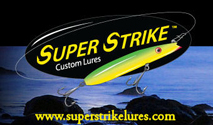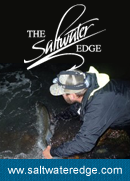Here is your official Spring 2016 STRIPERTHON TAG
.
.
.
.
FOR COMPLETE RULES CLICK BELLOW
https://surfcastersjournal.com/sj-spring-striperthon-sponsored-by-van-staal/

Good luck to all, you know what you have to do. Take your time and try to get a good measurement that is clear and that we are able to enlarge to read
Prizes for the Spring 2015 STRIPERTHON
- Van Staal 200 VR Spinning Reel
- Costa Del Mar Sunglasses
- Super Strike Lures Set
- Guppy Lures Set
- Trail Head Deflators
- SJ Gear package
You have to be ACTIVE member to participate, meaning your subscription must be active
OLD ARTICLE by SJ DAVE ANDERSON
Catch & Release Competitions
After another successful Striperthon it seems like the right time to talk about the evolution of the striper tournament. The phrase “no kill” is often used to emphasize the fact that most (if not all) of the fish entered into one of these tournaments will be released. It’s a concept I really believe in, some of you may know that I run GoTight.Net which is the online home of a very successful season-long catch and release surfcasting tournament.
There has been plenty of debate about the likelihood of survival for fish that are brought to shore for photographic documentation and, when done carelessly, I would agree that survival rates are below what any of us would prefer. But, when done correctly the fish are really not kept out of the water any longer than they are during a normal shore landing.
The right way to compete in one of these tournaments is to prepare to measure your fish before making your first cast. I compete in my own tournament but, of course, I can’t win anything I just enjoy the camaraderie that comes with playing the game every week. When I arrive at my spot of choice, I start by finding a good place to document my catch. The best places are flat areas of smooth gravel, flat boulders or, best of all, patches of wet weeds uncovered by the tide. When I find a suitable spot, I unfold and lay out my measuring device (in my case it’s a fiberglass folding ruler) and then make sure I have my tag and camera in an easily accessible spot before I make my first cast (I also make sure the flash is turned on). One of the big no-no’s of competing in these C&R events is recording your fish on dry sand, if your fish looks like a cinnamon doughnut when you go to release it, no matter how fast you are, it’s not going to do well. Sand in their slime, gills and eyes can cause infection and can be very hard for them to rid themselves of, if you fish the open beach you should document on hard, wet sand or bring a small tarp or towel to take your photos on.
From the moment you hook up, you should be thinking about the documentation process and hear a clock ticking in your head. Try to get the fish in as quickly as possible, I prefer to unhook the fish right when I catch it and then bring it over to the ruler. Lay the fish down near the ruler, move the ruler (not the fish) to line up with the tip of the tail and take the photo, pick the fish up for a quick selfie and the documentation process is done. Now I usually set a rock on the tag so it doesn’t blow away, I stuff my camera in my jacket or the neck of my wetsuit and then I hurry the fish back to the water where I will take whatever time is necessary (as I always do) to revive it. Written out, this sounds like it takes a long time, but I can usually document a fish and have it back in the water for revival in less than 30 seconds.
When you catch a big fish, there is a little more to the process. Bigger fish are usually on the line longer and have fought pretty hard. If I had to run a 30 yard dash and then go hold my breath underwater for 30 to 60 seconds I don’t think I’d be feeling too great by the end of my swim. The accepted process is to land the fish, remove the hook and then spend a minute or two reviving the fish on a Boga Grip or other lip-gripper tool before taking it to shore. After that short time in the water, I bring the fish in and go about the documentation process as I would for any other fish. This same basic process is used for any fish caught wetsuiting that has to be swum back to shore, keep the fish on the gripper and in the water until the last possible second before quickly documenting and releasing the fish.
Is this a perfect process? No. Is there a measure of release mortality? Yes. But, when done properly, I doubt very much that it’s any higher than regular fishing practices. One thing you can guarantee is that the mortality rate for every conventional “weigh-in” style striper tournament is 100%. If you compete with swift and proper release in mind, you should not have any problem safely releasing all of your fish. Just remember that being quick while the fish are out of the water and taking ample time for revival and release are the two major keys to release success—whether you’re in competition or not.















Zeno you should re-post Daves advice from last year when we kinda f’d up our pictures. I thought it was excellent advice and a great write up.
↓looking for it but can’t find it
↓https://surfcastersjournal.com/catch-release-competitions/
↓Here you go!